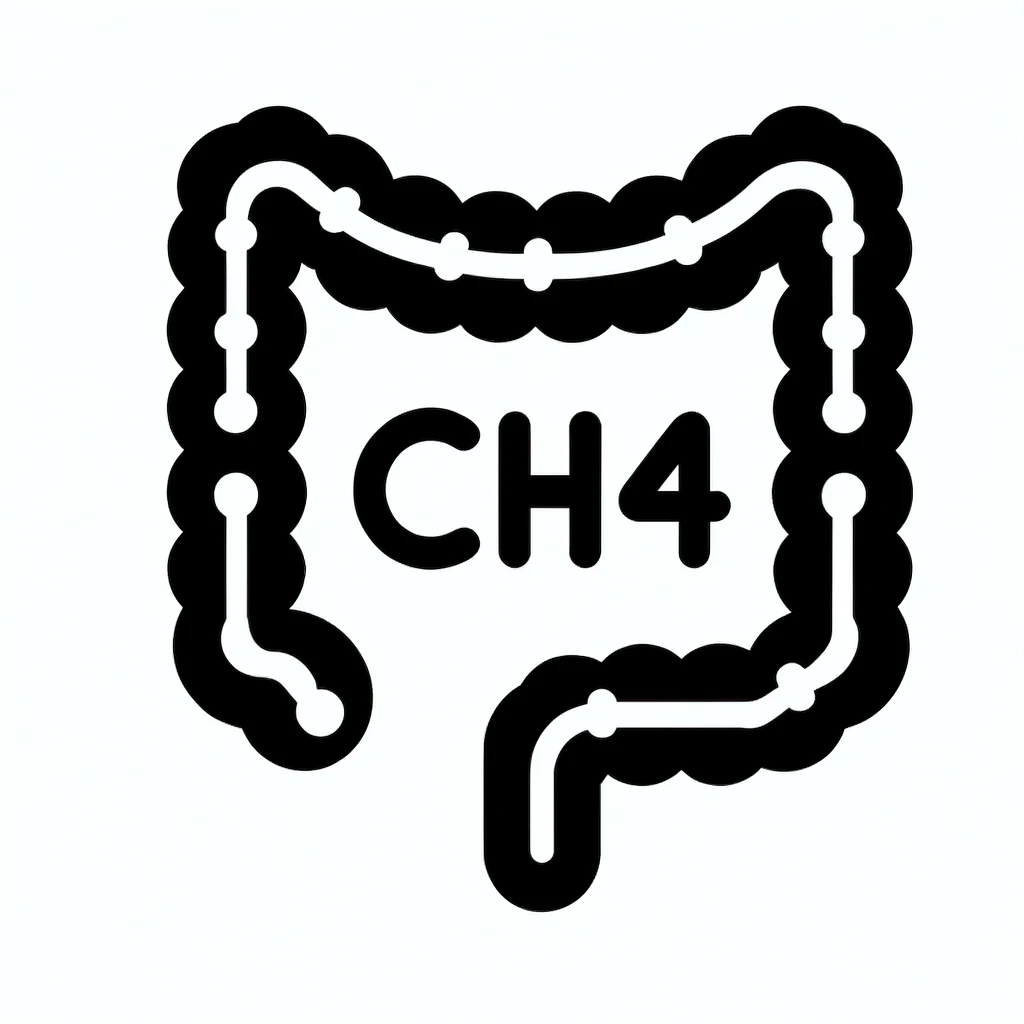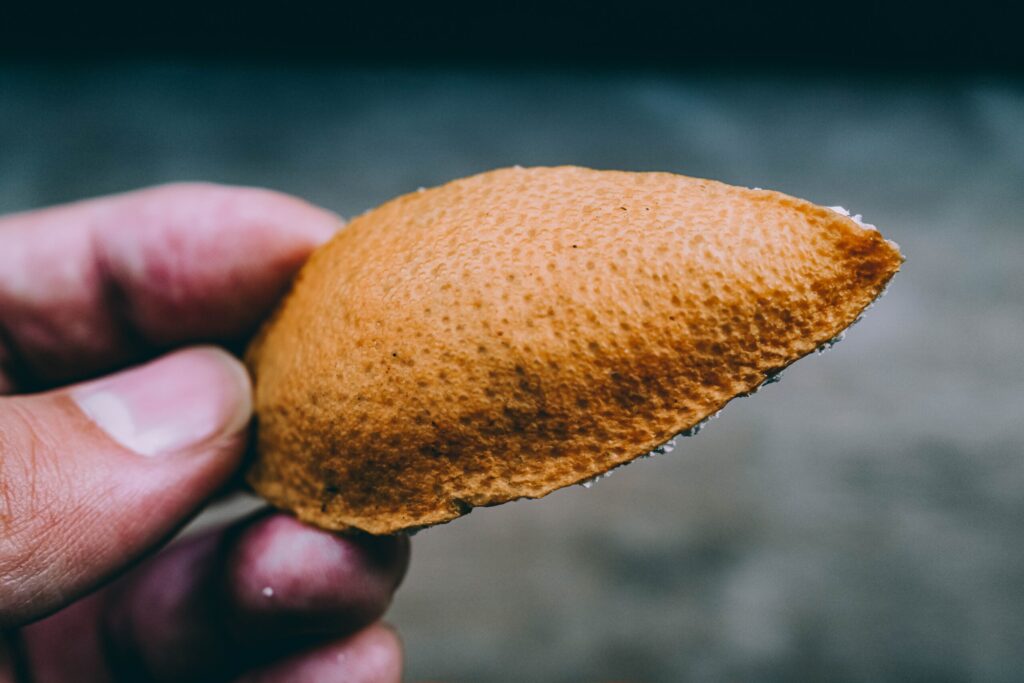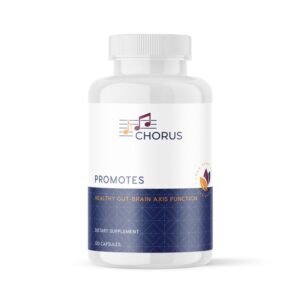Did you know that a single episode of food poisoning or traveler’s diarrhea could be the tipping point leading to SIBO?
Recognizing the various subtypes of SIBO is crucial for effective treatment, as each subtype requires a tailored approach.
Chorus is a uniquely effective herbal product across all three SIBO subtypes.
SIBO
Understanding the subtypes of SIBO is crucial for effective management and symptom relief. Typically, gas in our digestive tract is produced from two main sources: swallowing air and the breakdown of certain foods by colon bacteria. These processes lead to the formation of gases like oxygen, nitrogen, carbon dioxide, hydrogen, and sometimes methane. In SIBO, these gases are overproduced, primarily due to an imbalance in the types of bacteria present in the small intestine.
These bacteria, which include gram-positive and aerobic types in the small intestine and predominantly gram-negative and anaerobic types in the large intestine, break down carbohydrates and create excessive gas.
This overproduction is often linked to the non-digestion or absorption of certain carbohydrates, such as sugar, starches, and fiber, due to enzyme deficiencies. The subsequent breakdown of these undigested foods by bacteria in the large intestine leads to gas production and the characteristic symptoms of SIBO. Identifying the specific subtype of SIBO, based on the predominant gas produced, is key to tailoring treatment and alleviating symptoms for those affected.

Subtypes of SIBO
SIBO, can manifest in several subtypes, each defined by the predominant gas produced by the bacteria involved.
Originally, SIBO was primarily classified into two types: hydrogen-dominant and methane-dominant.
The American College of Gastroenterology has suggested the term “intestinal methanogen overgrowth” (IMO) for the methane-dominant type, acknowledging that the overgrowth of methanogens – archaea, not bacteria – can extend beyond the small intestine.
Recently, a third subtype has emerged, characterized by an overproduction of hydrogen sulfide gas. This variant differs notably from the other types in its symptoms and treatment challenges. Unique symptoms like intolerance to dietary sulfur, H2S-induced lactic acidosis leading to muscle weakness, and fatigue due to mitochondrial impairment are associated with this type.
Hydrogen

Hydrogen-dominant SIBO is often linked to diarrhea-predominant Irritable Bowel Syndrome
Methane

Methane-dominant IMO is typically associated with constipation-predominant IBS.
Hydrogen Sulfide

Hydrogen Sulfide-SIBO, on the other hand, can lead to increased rates of diarrhea and constipation, most notably bad sulfur smelling breath and gas.
Hydrogen Dominance in SIBO

Hydrogen Dominant SIBO, a condition marked by excessive hydrogen production in the gut, plays a significant role in digestive health. This subtype of SIBO, often characterized by rapid gut motility diarrhea, contrasts with Methane Dominant SIBO.
Studies have shown that hydrogen can shorten the transit time of contents through the colon, particularly in the proximal section, which can lead to symptoms like diarrhea and abdominal discomfort.
This difference in gut motility can significantly affect the liver function and responsiveness to treatments, such as rifaximin, which is more effective for Hydrogen Dominant SIBO than for its Methane Dominant counterpart.
Methane Dominance in SIBO

Methane Dominance SIBO, or Intestinal Methanogen Overgrowth (IMO), stands out as a specific subtype of SIBO due to its unique characteristics constipation and bloating effects on gut. In this condition, methane is produced through the anaerobic fermentation of carbohydrates by enteric microflora, particularly by archaea such as Methanobrevibacter smithii.
Unlike other gases, methane is not utilized by the human body. Its production in the gut is linked to functional bowel disorders, including constipation and bloating, and can also impact weight management, often being associated with obesity and reduced weight loss after bariatric surgery.
Studies have shown that methane slows down gastrointestinal motility, affecting the movement of food through the intestines. This reduced motility often leads to symptoms like constipation, bloating, and in some cases, may contribute to obesity. Additionally, the methane produced in the gut is either released as flatus or absorbed into the systemic circulation and expelled from the lungs. Excessive production and retention of this gas can cause functional gastrointestinal symptoms such as belching, flatulence, and abdominal pain. This is likely due to methane’s direct action on the cholinergic pathway of the enteric nervous.
Hydrogen Sulfide-Dominance in SIBO

Hydrogen Sulfide-Dominant SIBO, a less common but significant variant of SIBO, is characterized by the overgrowth of bacteria that produce hydrogen sulfide gas (H2S) in the small intestine. Notable bacteria involved include Desulfovibrio, Citrobacter, Clostridium, and others. H2S acts as a gasotransmitter, involved in various body functions, including inflammation and mucosal repair in the gastrointestinal tract. However, its overproduction can be linked to severe conditions like colorectal cancer and ulcerative colitis.
Diagnosing H2S SIBO can be challenging due to the lack of an accurate breath test.
Key indicators to look for include very pungent-smelling flatulence and unexplained bad breath. Symptoms unique to H2S SIBO, caused by the toxic properties of H2S gas, can include, odorous gas production, abdominal pain, bloating, and fatigue.
People with autoimmune conditions like rheumatoid arthritis, ankylosing spondylitis, or Sjögren’s syndrome might be more susceptible to this form of SIBO.
Preventing and Treating SIBO
In a healthy state, the small intestine is largely free of bacterial colonization, thanks to mechanisms like stomach acidity to kill bacteria and intestinal motility to push it out of the small intestine. SIBO occurs when these protective measures fail.
Prevention strategies for SIBO involve addressing underlying causes
First Stage of SIBO Treatment
Eradicating Harmful Bacteria
The initial step in treating Small Intestinal Bacterial Overgrowth (SIBO) is to effectively eradicate the overgrowth of harmful bacteria. One of the most commonly used treatments is Rifaximin, a non-absorbable antibiotic known for its targeted action against bacteria in the small intestine.
Rifaximin is particularly chosen for its minimal absorption in the gut, ensuring it acts where it’s needed most.
However, Rifaximin may not always be effective against methanogenic bacteria, a type of microbe often involved in SIBO. In such cases, it may be necessary to combine Rifaximin with other antimicrobial herbs for a more comprehensive approach.
The goal is not only to kill the bad bacteria but also to pave the way for restoring the balance of good bacteria and addressing the underlying causes that led to SIBO. This often involves improving gut motility and ensuring a balanced production of digestive acids and enzymes.
The only herbal suppliment designed to improve all three causes of SIBO
Herbs in Chorus Enhances Antibiotic Action
The herbs in Chorus work in harmony with antibiotics, enhancing their efficacy while providing a natural, holistic approach to tackling bacterial overgrowth. This multifaceted support is particularly beneficial in managing conditions like SIBO, where a combination of antibacterial strategies can lead to more effective outcomes.
Bai Zhi, with its established antibacterial properties, demonstrates an impressive ability to combat harmful bacteria, including Staphylococcus aureus. Studies have highlighted its anti-staphylococcal activity, particularly associated with its hexane extract. This herbal ingredient complements the action of antibiotics by targeting bacteria through different mechanisms, thus increasing the overall effectiveness of the treatment.
Peppermint, another crucial herb in Chorus, brings its potent antibacterial properties to the table. Its essential oils, rich in compounds like menthol, menthone, and neomenthol, have shown considerable bactericidal activity against a range of bacteria, including Escherichia coli. This broad-spectrum antimicrobial activity helps in creating an environment less conducive to bacterial overgrowth and more supportive of the antibiotics’ actions.
The Role of Diet in the First Stage
Adopting specific dietary approaches, such as an anti-SIBO or low FODMAP diet, can significantly impact the gut’s bacterial environment. These diets limit the bacteria’s access to their preferred food sources, mainly fibers and specific sugars like lactose, fructose, sugar alcohols, and certain oligosaccharides.
While these dietary changes are effective in reducing the immediate symptoms of SIBO by restricting the food supply for the bacteria, their impact is often not long-lasting. Clinical observations have consistently shown that while such diets play a role in symptom management, they tend only to suppress symptoms for the duration of the diet.
FODMAP
In the past few years, certain clinicians have warned against the use of the low-FODMAP diet for all types of SIBO, including H2S SIBO, as it has the potential to reduce microbiome diversity, therefore possibly worsening the patient’s gut health.48 This notion emphasises the importance of a holistic approach so that patients will not only be helped in the short-term, but will sustain long-term improvements
Low-Sulfur Diet
Following a low-sulfur diet is a key dietary modification for individuals with H2S SIBO. This involves limiting the intake of sulfur-rich foods such as cruciferous vegetables (broccoli, cauliflower, kale, and sprouts), red meat, eggs, dried fruits, beer, and wine. By reducing the consumption of these high-sulfur foods, the excessive gas production from hydrogen sulfide can be minimized, leading to symptom relief
Low-Fat
This dietary approach primarily aims to reduce bile release. Bile, a digestive fluid produced in the liver, can aggravate SIBO symptoms when produced in excess. By lowering fat intake, the production and release of bile are moderated, which helps in alleviating the digestive strain and aids in the healing process of the gut.
Bonus Tip
What you’ve been eating often may have inadvertently fed the bacteria contributing to SIBO. A simple yet effective strategy is to modify your diet by doing the opposite of what you’ve been accustomed to. If your diet is high in carbohydrates, sulfur-rich foods, or fats, shifting to a diet lower in these components can be beneficial.
Second Stage of SIBO Treatment
In the second stage of treatment , introducing good bacteria into the gut seems a logical step. This is typically done through probiotics. Probiotics such as Lactobacillus acidophilus and Bifidobacterium lactis have been effective, particularly in reducing methane production, which is significant in certain SIBO types.
However, the use of probiotics in SIBO treatment is not straightforward. Research offers mixed results, and much depends on the specific probiotic strains and the type of SIBO being treated. Clinically, while probiotics can offer short-term relief, they often do not provide a long-term solution. In fact, they can sometimes exacerbate the condition.
This paradoxical effect occurs when probiotics, especially certain Lactobacillus strains. While generally beneficial in the large intestine, their accumulation in the small intestine can make SIBO worse.
Third Stage of SIBO Treatment
Addressing Underlying Causes: Gut Motility and Acid Regulation
The third and crucial stage of SIBO treatment focuses on addressing the underlying causes that led to the condition and enhancing gut motility. This stage is vital in preventing recurrence and promoting long-term gut health.
Enhancing Gut Motility
One of the key factors in managing SIBO is improving intestinal motility, the movement of contents through the gastrointestinal tract. Several lifestyle changes can aid in this:
1. Exercise: Regular physical activity is essential. It helps move gas through the digestive system, thereby reducing bloating and improving overall gut motility.
2. Heat Application: Placing a hot water bottle or heating pad on the abdomen can relax gut muscles. This simple method can help facilitate the movement of stool and gas through the intestines, alleviating discomfort.
3. Massage: Gentle abdominal massages can be effective in easing discomfort. It can help relax stomach muscles, contributing to the smoother passage of contents through the digestive system.
4. Warm Water: Consuming warm water can soothe gas-related stomach pain. Ginger, a well-known prokinetic herb, stimulates digestive tract motility and can benefit those with SIBO.
Herbs in Chorus Enhances Gut Motility
Citrus Peel

Regulate Acid Production
A crucial aspect of managing Small Intestinal Bacterial Overgrowth (SIBO) involves regulating acid production, a key part of the gut-liver axis. This axis represents the crucial interplay between the gut and liver, with bile acids playing a central role. Produced in the liver, these acids significantly impact the gut environment by aiding in fat digestion and influencing the gut microbiome.
For individuals with SIBO, the focus on regulating bile acid production is particularly important. Since over 90% of bile acids are reabsorbed in the small intestine, any changes in their composition or production can have notable effects on the gut microbiome. In this complex interplay, some gut bacteria utilize components of bile acids, like taurine, as a nutrient source, highlighting the delicate balance within the gut ecosystem.
One natural approach to support this balance involves using traditional Chinese herbs known to regulate bile production:
Hawthron Fruit
Fructus Crataegi is recognized for promoting bile secretion and excretion, contributing to the overall health of the gut-liver axis.

Pepto-Bismol
Pepto-Bismol, known for its active ingredient bismuth, is commonly used to alleviate malodorous gases caused by excessive flatulence, particularly in Small Intestinal Bacterial Overgrowth (SIBO). Bismuth effectively binds with the sulphide part of hydrogen sulfide (H2S) gas, forming insoluble bismuth sulphide. This compound cannot be broken down in the digestive tract and is thus excreted in the feces. Such a reaction is beneficial in reducing symptoms related to H2S production in patients with H2S SIBO.
Beyond mitigating existing H2S, Pepto-Bismol can inhibit the metabolism of sulphate-reducing bacteria (SRB), which are responsible for H2S production. This dual action not only decreases H2S production but also curbs the growth of these bacteria. When used alongside antibiotics, bismuth can be particularly effective in targeting SRB. An additional advantage of bismuth is its ability to serve as a supplementary diagnostic tool, indicated by the dark coloration of bismuth sulphide in feces, which signifies excessive H2S production.
While these benefits make Pepto-Bismol a valuable tool in managing SIBO symptoms, it’s important to note that long-term use of bismuth carries potential neurotoxic side effects. Therefore, it should only be used for limited periods and under professional guidance. Alternatives like zinc acetate and iron citrate, which also bind to sulfide in the gut, can be safer options for long-term use due to their lower toxicity. Additionally, hydroxocobalamin, a vitamin B12 analog, has been used to treat acute H2S toxicity and might benefit H2S SIBO, though more research is needed to confirm its efficacy.
Why Choose Chorus
Its unique composition supports the gut’s natural environment, promoting the growth of beneficial bacteria while keeping harmful ones in check. Whether you’re battling bloating, discomfort, or other SIBO-related symptoms, Herbal Chorus offers a gentle yet powerful approach to restoring gut balance.
The only herbal suppliment designed to improve all three causes of SIBO
About the Author
Brehan Crawford, based in McMinnville, Oregon, is a distinguished clinician specializing in the treatment of chronic conditions, particularly Lyme Disease and its coinfections. After earning his Master’s degree in Acupuncture and Oriental Medicine from the Oregon College of Oriental Medicine in 2009, he deepened his expertise with a 5-year residency under the mentorship of the renowned Dr. Heiner Fruehauf at the Hai Shan Clinic. A Diplomate of Oriental Medicine from the NCCAOM, Brehan has pioneered innovative methods using Traditional Chinese Medicine for chronic infections. Known for mentoring other professionals, he regularly imparts knowledge on advanced Chinese herbal medicine applications. Beyond his clinical pursuits, Brehan enjoys singing, cooking, and hiking.







